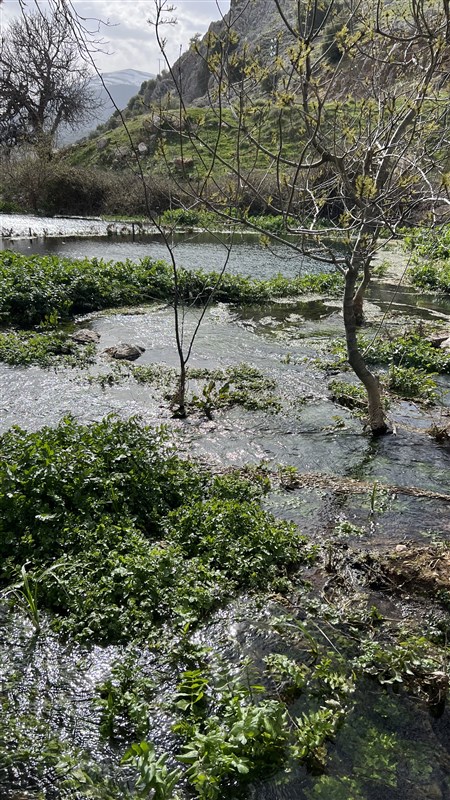Lebanon is known for its rich history, culture, and stunning landscapes. Despite its small size, the country boasts several nature reserves that are perfect for trekking and hiking. In this blog post, we will explore some of the most beautiful nature reserves in Lebanon and what makes them so special, so all that’s left for you to do is pack your backpack and hiking gear and start exploring!
Horsh Ehden Nature Reserve
Horsh Ehden Nature Reserve is a protected area located in North Lebanon, covering approximately 1,058 hectares of land. The reserve is known for its diverse ecosystem, which includes cedar forests, mixed deciduous forests, and mountainous terrain. It is home to many endangered species, including the Lebanese cedar, the Eurasian otter, and the Syrian brown bear.
Tannourine Cedars Forest Nature Reserve
Tannourine Cedars Forest Nature Reserve is located in the Tannourine region of Lebanon and is home to some of the oldest cedar trees in the country. The reserve is spread over an area of 550 hectares and is famous for its hiking trails that take you through the stunning cedar forest. The reserve is also home to several rare species of birds, including the Middle Eastern sparrowhawk and the Syrian serin.
Al Shouf Cedar Nature Reserve
Al Shouf Cedar Nature Reserve is the largest nature reserve in Lebanon, covering an area of 50,000 hectares. The reserve stretches from Dahr Al-Baidar in the north to Niha Mountain in the south and is home to a wide range of flora and fauna, including 32 species of wild mammals, 9 of which are considered rare. Trekking through the reserve, you will be able to see the majestic Lebanese cedar trees, which are some of the oldest and largest trees in the world.
Tyre Coast Nature Reserve
Tyre Coast Nature Reserve is located in the southern part of Lebanon and is home to a diverse range of marine life. The reserve covers an area of 380 hectares and includes several small islands and rocky outcrops. Trekking along the coast, you will be able to see several species of fish, crustaceans, and mollusks. You may also be lucky enough to spot a sea turtle or a dolphin.
Ammiq Wetland Nature Reserve
Ammiq Wetland Nature Reserve is located in the Bekaa Valley, in eastern Lebanon. It covers an area of approximately 200 hectares and is home to a diverse range of plants and animals, including several species of migratory birds. The reserve is centered around a large marshland, which is an important source of water for the region's agriculture. Visitors to the reserve can enjoy bird-watching, hiking, and boating, while also learning about the important role wetlands play in preserving biodiversity and supporting local communities.
Akoura Cedar Forest Nature Reserve
Aakoura Cedar Forest Nature Reserve is a 500-hectare reserve located in the Jbeil District of Lebanon. It is home to one of the largest remaining cedar forests in the country, with some trees estimated to be over 1,000 years old. The reserve also features a diverse range of plant and animal species, including the endangered Lebanese wildcat and several species of birds. Visitors can enjoy hiking through the forest, taking in the stunning views of the surrounding mountains, and learning about the importance of preserving Lebanon's natural heritage.
Bentael Nature Reserve
Bentael Nature Reserve is a small but important nature reserve located in the Byblos District of Lebanon. It covers an area of just 10 hectares but is home to a diverse range of plant and animal species, including several rare and endangered species. The reserve is characterized by its limestone cliffs and rocky terrain, which provide a unique habitat for a variety of flora and fauna. Visitors can enjoy hiking and sightseeing in the area.
Hima Anjar - Kfar Zabad Wetlands Nature Reserve
Hima Anjar - Kfar Zabad Wetlands Nature Reserve is located in the Bekaa Valley. It covers an area of approximately 360 hectares and is home to a variety of wetland habitats, including reed beds, ponds, and water channels. The reserve is an important stopover site for migratory birds, with over 200 bird species recorded in the area. Visitors can enjoy bird-watching, hiking, and cycling through the reserve, while also learning about the important role wetlands play in supporting biodiversity and providing ecosystem services such as water purification and flood control.
Hima Kherbet Kanafar Nature Reserve
Hima Kherbet Kanafar Nature Reserve is located in the Aley District of Mount Lebanon. The reserve covers an area of approximately 390 hectares and features a diverse range of habitats, including forests, grasslands, and rocky terrain. The reserve is home to a variety of wildlife, including several species of birds, reptiles, and mammals such as foxes, wildcats, and hedgehogs. The reserve also serves as an important buffer zone for the nearby Kherbet Kanafar village, protecting it from natural hazards such as landslides and floods.
Hima El-Fekha Nature Reserve
Hima El-Fekha Nature Reserve is located in the Jezzine District of Lebanon. The reserve covers an area of approximately 500 hectares and features a diverse range of habitats, including forests, wetlands, and rocky outcrops. The reserve is home to a variety of plant and animal species, including several species of migratory birds and reptiles such as snakes and lizards. The reserve also provides important ecosystem services such as water regulation and soil conservation, benefiting both local communities and the wider region.
Hima El-Asaad Nature Reserve
Hima El-Asaad Nature Reserve is located in the Akkar District of North Lebanon. Covering an area of approximately 650 hectares, the reserve is characterized by its rugged terrain and rich biodiversity. The reserve is home to a variety of plant and animal species, including several species of birds of prey, reptiles, and mammals such as foxes and hyenas. The reserve also serves as an important grazing area for local shepherds and their flocks, and plays a crucial role in maintaining the ecological balance of the region
Palm Islands Nature Reserve
Palm Islands Nature Reserve is located in the city of Tripoli. It is a unique marine reserve that covers an area of approximately 1.5 square kilometers, consisting of three islands: Palm Island, Rabbit Island, and the smaller Sanani Island. The reserve is home to a variety of marine life, including over 300 species of fish, sea turtles, and a variety of crustaceans and mollusks. The islands are also important breeding sites for several bird species, such as the yellow-legged gull and the little egret. Visitors can enjoy swimming, snorkeling, and scuba diving in the crystal-clear waters, while also learning about the importance of preserving Lebanon's marine biodiversity. The reserve also offers guided tours and educational programs that promote conservation and environmental awareness.
Mount Hermon Nature Reserve (Jabal Al-Sheikh)
Mount Hermon Nature Reserve, also known as Jabal Al-Sheikh, is a mountain range located on the border between Syria and Lebanon, with a small portion in the Israeli-occupied Golan Heights. It is the highest point in Syria and Lebanon, and the area is known for its scenic beauty, including forests, springs, and wildlife. The reserve is home to various species of animals, including bears, wolves, and many species of birds. It is a popular destination for hikers, nature lovers, and winter sports enthusiasts, as it offers skiing opportunities during the winter months. The area has a long history and cultural significance, with archaeological sites dating back to ancient times. Despite being located in a politically volatile region, the reserve continues to attract visitors from around the world who come to experience its natural beauty and rich history.
Yammouneh Nature Reserve
Yammouneh Nature Reserve is a protected area located in the mountains of Lebanon, covering approximately 5,000 hectares of land. The reserve is known for its diverse ecosystem, which includes forests, wetlands, and mountainous terrain. It is home to many endangered species, including the Syrian brown bear, the Eurasian otter, and the Griffon vulture. Visitors to the reserve can enjoy hiking, birdwatching, and camping. The reserve is also known for its freshwater springs, which provide water to the surrounding villages and support a variety of aquatic life.
Chnaniir Nature Reserve
Established in 2010, a relatively recent nature reserve, Chnaniir Nature Reserve is a protected area located near Ghazir and Jounieh, covering approximately 280 hectares of land. The reserve is known for its rich biodiversity and unique landscape, which includes coastal cliffs, rocky shores, sandy beaches, and a cute treehouse. The reserve also has a cultural significance, as it contains the remains of an ancient Phoenician city, which dates back to the 4th century BCE.
Arz Jaj Nature Reserve
Arz Jaj Nature Reserve is a protected area located in the Mount Lebanon Governorate, covering approximately 5.5 square kilometers of land. The reserve is known for its stunning landscape, which includes cedar forests, rocky cliffs, and natural springs. It is home to the endangered cedar tree, the Syrian brown bear, the wolf, and various bird species such as the Griffon vulture and the Bonelli's eagle. The reserve is also known for its snow cover in the winter months, making it a popular destination for winter sports enthusiasts.
Lebanon's nature reserves offer a unique and stunning trekking experience that should not be missed. From the majestic cedar forests to the stunning coastal views, Lebanon's nature reserves have something for everyone. Whether you are a seasoned hiker or a nature lover, trekking through Lebanon's nature reserves is an experience that you will never forget.











.webp)













